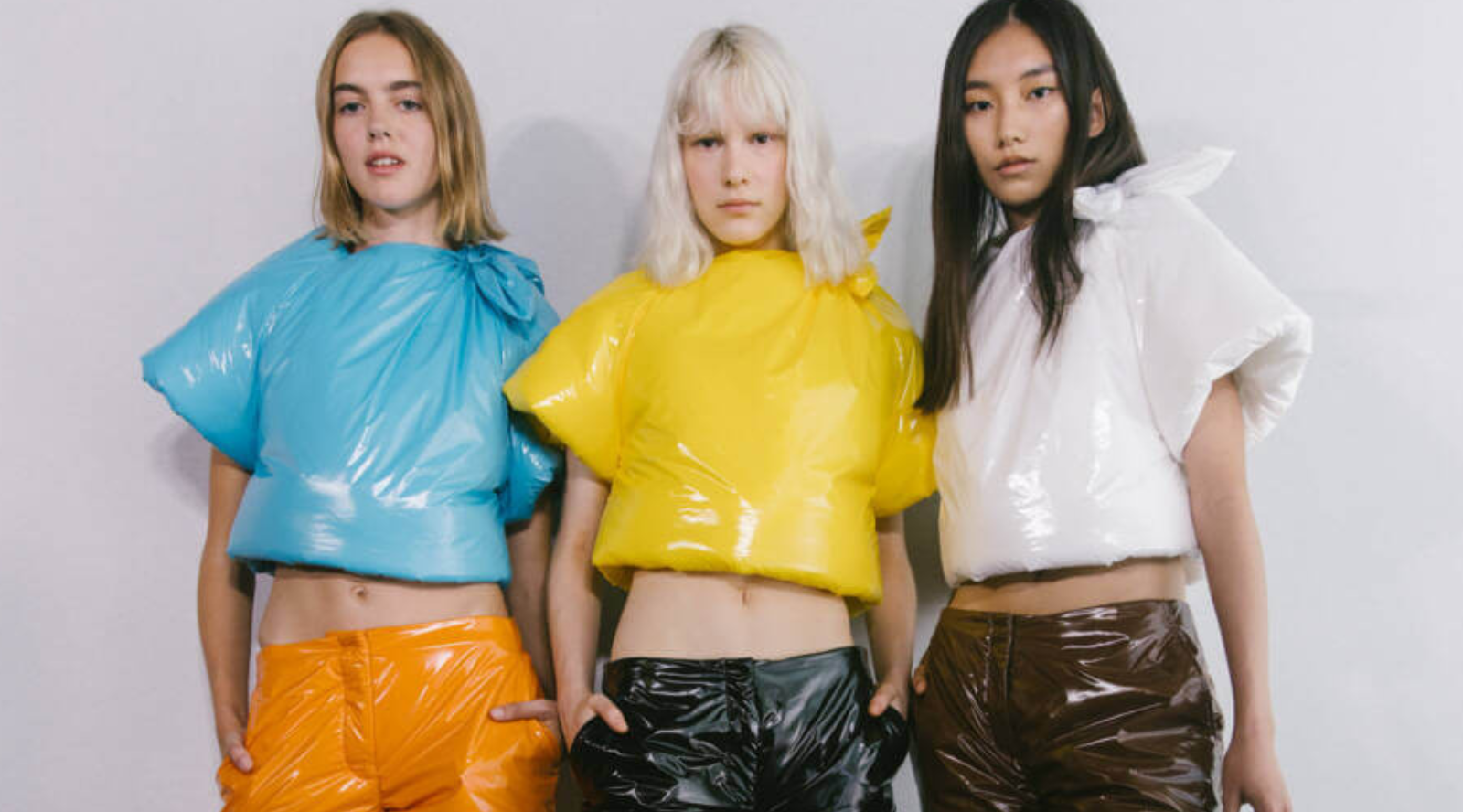Clothing made for the runway has always been a vibrant canvas where designers use their talent to tell stories through a vision, much in the same way fine artists do. The relationship between art and style has always been substantial, but in recent years it has intensified. Designers like Elsa Schiaparelli, who collaborated with Salvador Dalí in the 1930s, set the foundation for the integration of surrealism into the sartorial. Saint Laurent’s unforgettable Mondrian dress and Takashi Murakami’s iconic rainbow Louis Vuitton monogram, which still resonates today, are prime examples of this bond. This relationship between the fine arts world and the fashion sphere has grown more prominent than ever, as designers experiment with textiles, forms, and themes to communicate their ideas. Whether through textile innovation, performance pieces on the runway, or garments as canvases for social messages, contemporary fashion tells stories that resonate with the human experience, much like a painting or sculpture in a gallery.
This season, both Jun Takahashi and Kim Jones have showcased a lively dialogue between art and fashion that transcends mere aesthetics. For Undercover Spring/Summer 2025, Takahashi embraced the surrealist aesthetic of Robert Bosisio’s ethereal paintings, creating a dreamlike narrative on the runway. Bosisio’s nebulous, haunting scenes were transformed into discernible landscapes that evoked a vast limbo. Takahashi used these visuals as a metaphor for a borderless world, connecting clothing design to themes of unity and universality during a time of division. This collaboration highlighted Takahashi’s talent for transforming clothing into a canvas for deeper reflection, intertwining imagery and everyday wear into poetic, wearable art.

Similarly, Kim Jones for Dior’s Spring/Summer 2025 Menswear turned to the whimsical world of South African ceramicist Hylton Nel for inspiration. Nel’s playful, hand-crafted statues of cats were incorporated into the show as towering sculptures and adorned collars and hats throughout the collection. The scenography added a distinct surrealist charm to Jones’ modern interpretation of Dior’s classic tailoring, while the garments themselves celebrated whimsicality. These collaborations reveal a trend where designers blend their personal tastes in fine art with their craft of clothing to challenge perceptions, connect cultures, and provoke thought—testament to style as a powerful medium for expression.
A meditation on textiles is also taking on new meanings today. In the past, designers like Issey Miyake and Rei Kawakubo used their labels as platforms for sculptural expression. Now, younger designers are taking textile experimentation even further. Marine Serre’s Spring/Summer Menswear 2024 collection exemplifies how fabric is being manipulated to challenge silhouettes and convey messages. Serre’s extensive use of recycled materials—turning deadstock textiles into intricate, meaningful garments while preserving their found-object quality—delivers a strong commentary on sustainability and the future of fashion. For F/W 2023 in Paris, Coperni used spray-on fabric technology in a performance that reflected society’s growing concern with the environment, innovation, and the intersection of fashion with science and technology. This act served as both an homage to Alexander McQueen’s iconic 1999 “No. 13” spray-paint dress and a bold statement on sustainability.

Designers like Jonathan Anderson push the boundaries of what traditional fabrics can do. His exaggerated, sculptural manipulation of materials blurs the lines between contemporary art and fashion. For Loewe’s Spring/Summer 2023 Ready-to-Wear, Anderson crafted a dress shaped like a giant anthurium flower, and for S/S 2025, a fluted jacket from scalloped mother-of-pearl sheets. Surreal yet grounded, Anderson’s experimentation with leather mirrors an artist’s relationship with their primary medium, where the material itself becomes a storyteller, reshaping the human form into something both familiar and fantastical.
Designers today also use fashion as a form of visual activism. In the 1960s, designers like Yves Saint Laurent and Paco Rabanne drew inspiration from cultural shifts, but their commentary remained subtle. Today, activism is no longer a subtext—it’s the main narrative. Designers are using their collections to address pressing social and political issues, pushing beyond aesthetics to tackle topics like sustainability, gender fluidity, and racial injustice. Maria Grazia Chiuri at Dior regularly infuses feminist messages into her designs, from her iconic “We Should All Be Feminists” T-shirts to collections inspired by historical female figures. Similarly, Stella McCartney remains a trailblazer for sustainability, both in her choice of materials and in the way her shows highlight environmental consciousness.
Fashion has also evolved into a deeply personal yet universal storytelling medium. Simone Rocha’s Fall/Winter 2023 collection, for example, explored themes of heritage and female identity. Through delicate lace, embroidery, and tulle, Rocha blended traditional femininity with modern narratives, creating garments that resemble museum pieces layered with meaning.
Fleeting trends and flattering silhouettes are no longer enough to captivate consumers. This shift toward storytelling and experimentation reflects a broader change in how we view clothes. Designers act as modern-day artists, using fabric, form, and technique to create pieces that transcend wearability. From Jonathan Anderson’s sculptural explorations to Marine Serre’s sustainable storytelling and the pioneering activism of Maria Grazia Chiuri and Stella McCartney, contemporary fashion is rich with examples of how fabric, form, and narrative are used to tell stories. Fashion today is about more than just looking good—it’s about celebrating meaningful storytelling through wearable art that speaks to the present moment.


Leave a Reply